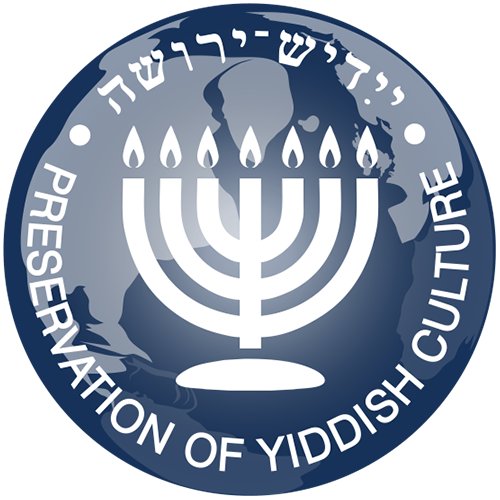Destruction of JAC
On December 24, 1948, Stalin’s police began to arrest members of the Jewish Anti-Fascist Committee (JAC). They were brought to the Lubyanka Building, the headquarters of the Soviet secret police, where they were kept for more than four years, while the investigation was ongoing, and subjected to harsh interrogations. The investigation protocols were sent directly to Stalin.
They were accused in the most unbelievable supposed crimes. For example, the actor Benjamin Zuskin was later executed for “arousing nationalistic feelings in the Jewish audience, because, together with Mikhoels, he staged plays that glorified Jewish antiquities, shtetl traditions, life and the tragic fate of the Jews in his theater.”
Zuskin was a partner of Solomon Mikhoels who was assassinated by Stalin’s order on January 13, 1948. His death was disguised as a car accident. Zuskin inherited from Mikhoels the position of artistic director of the Moscow State Jewish Theater (GOSET). The theater was closed in November 1949.
Some JAC members, including Boris Shimeliovich and Joseph Yuzefovich, refused to admit the false accusations of treason and were physically tortured for their steadfast and persistent refusal.
The closed trial of 15 JAC members began on May 8, 1952. The Military Collegium of the Supreme Court of the USSR sentenced to death Solomon Lozovsky, Itzik Fefer, Joseph Yuzefovich, Boris Shimeliovich, Leyb Kvitko, Peretz Markish, David Bergelson, David Hofstein, Benjamin Zuskin, Leon Talmi, Emilia Teumin, Ilya Vatenberg and Chaika Vatenberg-Ostrovskaya. It is generally assumed that the sentence was carried out on August 12, 1952.
Lina Stern, the first woman scientist to be elected a full member of the Academy of Science of the USSR, was sentenced to three and a half years of prison, followed by five years of exile. Another person involved in the trial was Solomon Bregman, a former deputy minister of State Control of the Russian Soviet Federative Socialist Republic. As early as June 16, 1952, he was brought in an unconscious state to the medical unit of the Butyrka prison, where he died on January 23, 1953, “having signs of declining cardiac activity.”
On January 3, 1949, the Central Committee of the All-Union Communist Party (Bolsheviks), sent a closed letter to all regional leading party structures about the dissolution of the JAC and the criminal prosecution of all persons associated with it who were “convicted of espionage”. The official anti-Jewish repressive policy kept spreading throughout the entire country. It was significantly facilitated by the vocal propaganda campaign against the so-called “rootless cosmopolitans”. It was launched on January 28, 1948, by a Pravda editorial titled “On one anti-patriotic group of theater critics”.
The country’s main official newspaper criticized several figures previously known almost exclusively in theatrical circles: Gurvich, Yuzovsky, Borshchagovsky, Varshavsky, Malyugin, Boyadzhiev and Kholodov. According to the article, these people “had lost their responsibility toward the people, being the emissaries of rootless cosmopolitanism, deeply disgusting and hostile for the Soviet people.” The editorial declared that these theatrical personalities were emblematic figures who undermined the foundations of Soviet patriotism.
On January 29, 1948, Literaturnaya Gazeta (The Literary Gazette) added Altman to the list of the “rootless cosmopolitans”. On January 31, the newspaper Kultura i Zhizn’ (Culture and Life) clarified that Kholodov was the pseudonym of a writer whose real name was Meerovich.
Following these publications, the Jewish intelligentsia and literary figures across the entire country encountered a broad wave of suspicion, harassment, dismissal from work and even occasional arrests.
At that time, the remaining structures of the Jewish culture were getting closed one after another, as if they were unofficially forbidden: Yiddish newspapers, magazines, theaters, museums, publishing houses, research centers, etc. The leading representatives of the Zionist movement, which later emerged in the USSR, would later call these events “a national-cultural genocide”.
The JAC case also spawned secondary waves of anti-Semitic trials across the country. One victim of such oppression was the journalist and literary critic Miriam Aizenstadt (literary pseudonym – Mirra Zheleznova). Advised by the writer and journalist Ilya Ehrenburg and on behalf of the JAC, starting from 1942, she began collecting materials and preparing articles about prominent Jews, such as well known scientists, engineers and organizers of large-scale industries. The articles were to be published during WWII in the Western countries allied with the USSR.
In addition, Mikhoels instructed her to established contacts with the leadership of the Soviet military authorities responsible for giving awards, in order to compile the list of Jews who received the title of Hero of the Soviet Union – the highest distinction for heroic feats in the country – and to prepare biographical essays for 30 of them. As we know today, 131 Jews who received this title have been identified.
Describing the heroism of Jewish warriors who fought together with other peoples of the country against the common enemy was an important task of the JAC. In April 1950, Aizenstadt was arrested and a few months later, in November, she was executed. In June 1950, while being jailed in the investigative Lefortovo Prison, she managed to send a note home.
As her daughter later recalled: “In my mother’s note addressed to my father and to me, full of love and suffering, were also such words: ‘The accusations against me are monstrous. I will not sign anything, which means we will never meet again’”.
Mirra Zheleznova was tried in an anti-Jewish case falsified by the state security at the Moscow car plant named after Slalin (known as ZIS). Along with her, 13 other people were executed.
A similar large-scale trial took place at the Moscow Region Pedagogical Institute. It was knows as the case of the youth organization “Union for the Revolutionary Struggle”. 3 people were executed and 10 sentenced to 25 years of work camps. 4 other people were executed and 3 more received a 25-year camp term at the Kuznetsk Iron and Steel Plant in the city of Stalinsk (now – Novokuznetsk). In the Jewish Autonomous Region, 4 people were sentenced to 25 years of work camps.
Chaim Ben Yakov

